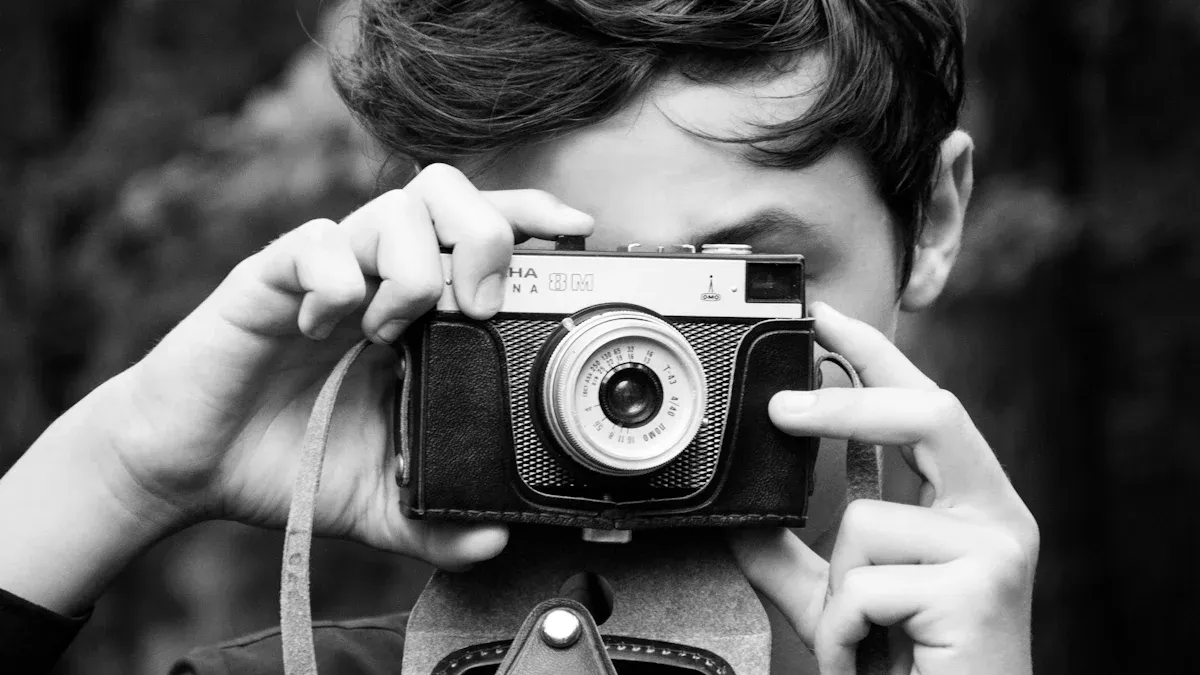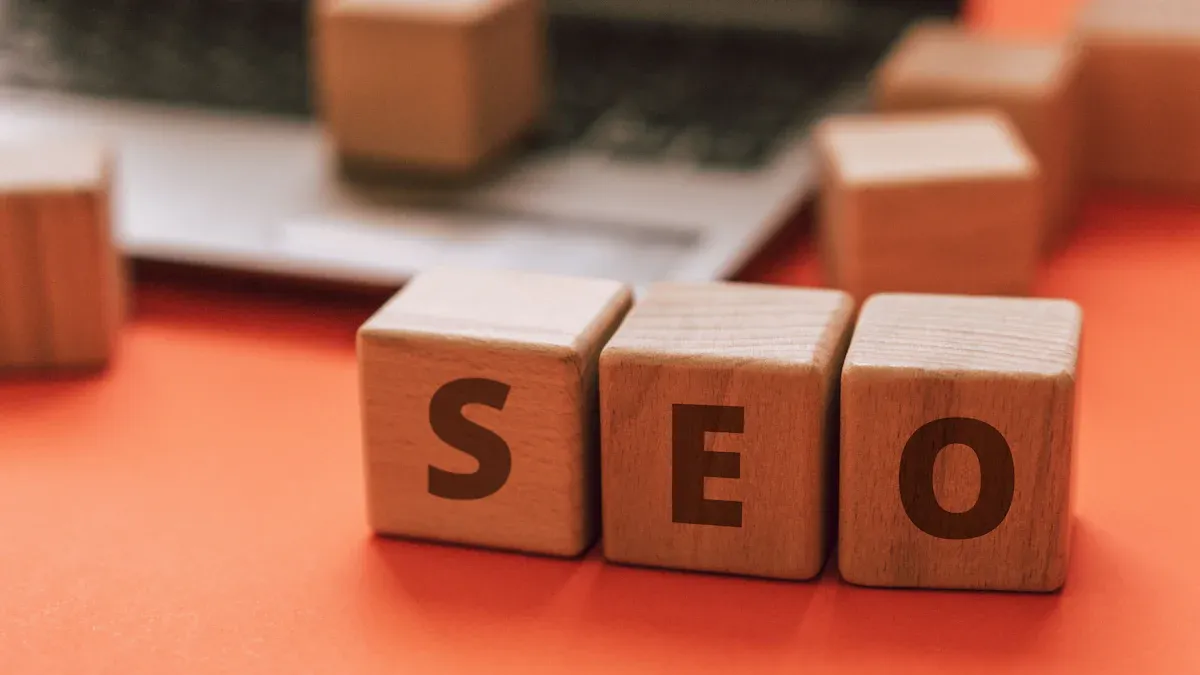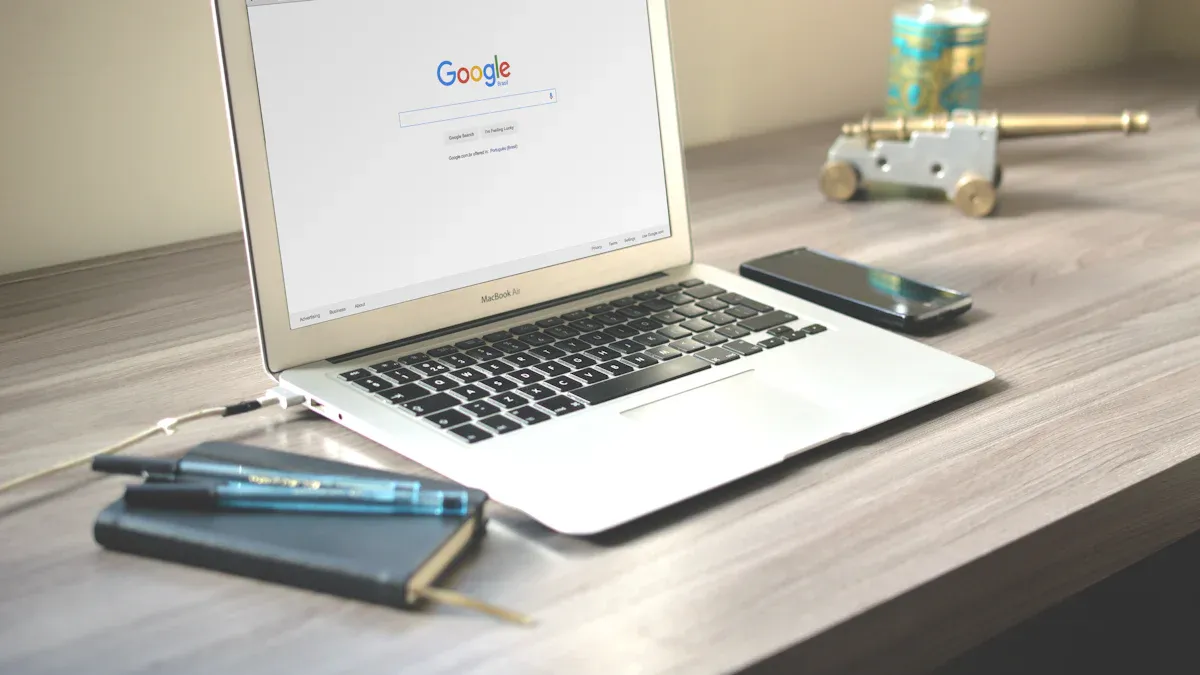Image Optimization for Photographers to Rank Locally

You can boost your photography business by using image optimization with local keywords. Search engines notice when you add location terms to your images, which leads to better search engine visibility and more client inquiries. Local SEO makes a big difference for photographers, since 28% of local searches turn into conversions and businesses with photos get more clicks.
- 88% of people searching for nearby photography services visit or call within a day.
- 78% of mobile local searches lead to an offline purchase.
Start using SEO strategies to attract more local clients and stand out in your area.
Local SEO for Photography
Why Local SEO Matters
You want your photography business to stand out in your city. Local seo helps you reach people searching for photographers nearby. When you use photography seo, you show up higher in local search results. This means more people see your work and contact you. Here are some main benefits of local seo for photographers:
- Local seo improves your visibility in local search results by optimizing your Google Business Profile and keeping your business information consistent.
- You reach more clients who are actively searching for photography services, which brings more relevant traffic.
- Using local keywords and creating pages for specific locations helps you connect with your target audience.
- Local seo increases your conversion rates because visitors are already interested in photography.
- You can bypass competitors by building a strong online presence and ranking higher in local searches.
- Local seo builds brand awareness as clients see your business often in search results.
- You save money compared to traditional ads, and your results last longer.
- You can track your progress and improve your marketing with real data.
Local seo gives you a real edge over photographers who do not optimize. You get more inquiries and bookings because clients trust businesses that appear at the top.
Google Business Profile
Your Google Business Profile is a powerful tool for photography seo. Make sure your profile is complete with your name, address, phone number, business description, and high-quality images. Keep your profile active by posting updates, responding to reviews, and adding new photos. Upload a variety of images, such as portraits, event shots, and behind-the-scenes photos. This helps your profile look professional and engaging.
- High-quality images encourage people to click and spend more time on your profile.
- Regular updates and fresh photos show Google that your business is active.
- Responding to reviews and questions builds trust with potential clients.
A well-managed Google Business Profile boosts your image seo and helps you rank higher in local searches.
Local Citations & Reviews
Local citations and client reviews are key parts of photography seo. Citations are listings of your business on sites like Yelp, Bing Places, and local directories. Make sure your business name, address, and phone number are the same everywhere. This consistency helps search engines trust your business.
- Citations make it easier for clients to find you online.
- Accurate information builds trust and improves your local seo ranking.
Client reviews also play a big role. Positive, recent reviews show that people like your photography services. Respond to reviews to show you care about your clients. Good reviews help you appear in Google’s Local Pack, which brings even more local traffic.
Tip: Ask happy clients to leave reviews and always thank them for their feedback. This simple step can boost your image seo and bring in more bookings.
Local Keywords
Keyword Research
You need the right keywords to help your photography business show up in local searches. Start by thinking about what your clients type into Google when they look for photography services. Use these steps to find the best keywords for photography seo:
- Begin with your location. Add your city, neighborhood, or even famous landmarks to your keywords.
- Think about what your clients want. Are they searching for wedding photography, family portraits, or event coverage?
- Use keyword research tools like Google Keyword Planner or SE Ranking. These tools show you how many people search for each term and how hard it is to rank.
- Check what keywords your competitors use. Look at their websites and see which terms help them rank high.
- Update your keyword list often. Trends change, and so do the words people use.
Tip: Long-tail keywords like “family portrait photographer in Brooklyn” work better than short ones. They bring in clients who know what they want and are ready to book.
Some helpful tools for finding location-based keywords include:
- Google Keyword Planner
- SEM Rush
- Ahrefs
- Keywords Everywhere
- Answer the Public
Choosing Location Terms
Picking the right location terms is key for photography seo. You want to match what people in your area search for. Use this table to see how different keywords work:
| Keyword Example | Why It Works | How to Judge |
|---|---|---|
| Wedding photographer in [City Name] | Targets couples in your area | Check search volume |
| Family portrait photographer near me | Catches local families | Look at local trends |
| Outdoor engagement photography in [Location] | Attracts couples wanting outdoor shoots | Check season trends |
| Affordable family photographer in [Your City] | Draws in price-conscious clients | See if demand exists |
You can also use real-world examples like “New York City Commercial Photographer” or “wedding photographer in Los Angeles.” These keywords help your photography seo by connecting your services to local clients. Always include your city or neighborhood in your seo strategy. This makes your photography business easier to find and helps you stand out in local seo results.
Optimize Images

Image optimization is a key part of photography seo. When you optimize images, you help search engines understand your work and connect it to local clients. This section will show you how to use local keywords in file names, alt text, and captions. You will also learn how to avoid keyword stuffing and keep your language natural.
File Names & Alt Text
You should always optimize file names and alt text for your images. Search engines cannot see your photos, so they rely on text to understand what each image shows and where it was taken. Using local keywords in these places helps your photography business appear in local searches.
- Use descriptive file names that include local keywords. For example, instead of "IMG_1234.jpg," use "family-portrait-central-park-nyc.jpg."
- Keep file names short—under six words—and separate each word with a hyphen.
- Write descriptive alt text that explains what is in the image and where it was taken. For example, "Bride and groom dancing at sunset in San Diego."
- Include local keywords naturally in your alt text, but do not repeat them.
- Make sure each image has unique and meaningful alt text.
When you write alt text, focus on creating useful, information-rich content. Use keywords in context and avoid filling alt attributes with too many keywords. This helps both search engines and users.
You should also follow these best practices for alt text:
- Write in full sentences with proper punctuation.
- Keep alt text concise, around 15 words.
- Do not use phrases like "image of" or "photo of."
- Only add alt text to images that add value. Decorative images do not need alt text.
- Include any text that appears in the image.
By following these steps, you improve your image seo and make your photography more visible to local clients.
Captions & Context
Captions and the text around your images help search engines understand the story behind your photos. When you add captions with local keywords, you give more clues about your photography and its location.
- Captions should match the file name and alt text to reinforce local relevance.
- Include who, what, where, and when in your captions. For example, "Sarah and John celebrate their wedding at Golden Gate Park, San Francisco, 12 June 2023."
- Use present tense and spell out dates fully.
- Avoid vague descriptions and relative dates like "today" or "last week."
- Add descriptive text around your galleries or portfolios. Tell the story of the shoot, mention the location, and describe the event.
| Caption Example | Why It Works |
|---|---|
| "Family reunion at Central Park, New York City, 10 May 2023." | Includes who, where, and when for local seo. |
| "Senior portraits at Lincoln High School, Dallas, Texas, 15 September 2022." | Uses local keywords and gives clear context. |
You can also link your photos and captions to local pages on your website. This boosts your photography seo and helps your images rank higher in local searches.
Avoid Keyword Stuffing
You must avoid keyword stuffing when you optimize your images. Keyword stuffing means repeating the same words too many times in file names, alt text, or captions. This can hurt your seo and make your site look like spam.
- Do not repeat keywords in your image alt text or file names.
- Write short, descriptive, and unique alt text for each image.
- Use keywords only when they fit the image description.
- Decorative images should have a blank alt tag (alt="") to avoid unnecessary keywords.
- Focus on user experience and accessibility. Write for people first, not just search engines.
Tip: Always use natural language when you optimize your images. Write titles and descriptions for users, not just for search engines. This keeps your content engaging and helps your photography business stand out.
When you optimize file names, alt text, and captions with local keywords, you improve your image optimization and photography seo. You help search engines understand your images and connect your photography to local clients. Remember to use descriptive alt text and image description, and always avoid keyword stuffing. By following these steps, you make your images easier to find and attract more clients to your photography business.
Image Optimization Techniques

Compression & Formats
You want your photography website to load fast and look sharp. Image compression helps you reduce file size without losing quality. This step is important for both image optimization and image seo. Here are some ways you can compress and optimize images:
- Use JPEG for most photos. It gives you good quality with a small file size.
- Try next-gen formats like WebP and AVIF. These formats offer better image compression and keep your images clear.
- Choose lossless compression if you need perfect quality. Use lossy compression to shrink file size more, with little visible change.
- Resize images before uploading. Make sure they fit the space on your website.
- Remove extra metadata from your images to make them smaller.
- Use tools like Smush or TinyPNG to automate image compression.
| Image Format | Compression Type | Transparency Support | Best Use for Photographers and SEO |
|---|---|---|---|
| JPEG | Lossy | No | Everyday photography, web use |
| PNG | Lossless | Yes | Images needing transparency |
| WebP | Lossy/Lossless | Yes | Web-optimized, small file size |
| AVIF | Lossy/Lossless | Yes | High-efficiency, top quality |
Smart image compression and the right format help your site load faster and improve your image seo.
Structured Data & Geo-Tagging
You can boost local search by adding structured data and geo-tagging to your images. Geo-tagging means you add location data, like latitude and longitude, to your image files. This tells search engines where you took the photo. Here is how you can do it:
- Upload your images to a geo-tagging tool.
- Set the marker or enter the exact coordinates.
- Add local keywords and location details in the tags and description.
- Save the new metadata.
- Download and upload the optimized images to your website or Google Business Profile.
Structured data, like Schema.org markup, gives search engines more details about your business and images. When you combine geo-tagged images with consistent business info, you help search engines trust your site. This can improve your local rankings and make your images easier to find for clients nearby.
Tip: Turn on GPS on your camera or phone to add location data automatically. This makes image optimization for local seo much easier.
Responsive & Mobile Images
Most people search for photographers on their phones. Over 70% of web traffic comes from mobile devices. You need to optimize images for all screen sizes to enhance user experience and improve your local rankings. Use responsive images with the srcset attribute. This lets browsers pick the best image size for each device.
| Aspect | Explanation | Impact on Local Search Rankings |
|---|---|---|
| Responsive Images | Flexible sizing ensures images look good on all devices. | Better mobile usability, higher rankings with mobile-first index. |
| Image Optimization | Smaller file size and modern formats speed up loading. | Lower bounce rates, better engagement, improved SEO. |
| Mobile-First Indexing | Google ranks sites by mobile experience. | Optimized images help you rank higher locally. |
Resize and test your images on different devices. Use CSS to make images scale. Compress images to keep load times short. When you optimize images for mobile, you help your site rank higher and keep visitors happy.
Off-Page & Tracking
Image Submission Sites
You can boost your local seo by sharing your best images on public gallery sites. These platforms let you show off your work and add backlinks to your website. When you upload images to photo galleries, you gain both exposure and authority in your area. Here are some ways to get the most out of these sites:
- Give each image a unique, keyword-rich title. Avoid using camera file names.
- Rename your image files with keywords and hyphens for better indexing.
- Write detailed descriptions for your images. Use keywords that match what people search for in your city.
- Share your images across several platforms. For example, post on Flickr, then share the same images on Pinterest and Tumblr. This creates a network of social signals that helps your seo.
- Engage with the community by joining groups, commenting, and sharing other photographers’ work.
Tip: High-quality, vertical images stand out on platforms like Pinterest. Use hashtags and descriptive keywords to make your images easier to find.
Backlinks & Local Platforms
Backlinks from trusted local sources act like votes for your website. When local news sites, directories, or community groups link to your photo galleries, search engines see your business as more relevant and trustworthy. You can earn these backlinks by:
- Creating profiles on portfolio sites that allow you to link back to your website.
- Guest blogging or sharing your images on local blogs and news sites.
- Partnering with local organizations and getting featured in their online photo galleries.
- Using tools like HARO to find opportunities to share your images or expertise.
These backlinks help your seo by connecting your business to your community. They also improve your visibility in local search results.
SEO Performance Tools
Tracking your seo progress is important. You want to know if your images and photo galleries are helping you rank higher. Use these tools to measure your results:
- SEMrush Rank Tracker: See how your rankings change over time.
- LocalViking GeoGrid: Track your local seo performance on a map.
- Google Search Console and Google Analytics: Monitor website traffic, image clicks, and user behavior.
- Envira Gallery and AIOSEO: Optimize images, manage alt text, and improve on-page seo.
- CloudFlare CDN: Speed up image loading for visitors in your area.
Watch key metrics like ranking, traffic, and engagement with your photo galleries. Adjust your strategy based on what works best.
You can improve your photography business by following these key steps:
- Use keyword research to find what clients search for in photography.
- Name your images with descriptive, location-based words.
- Compress photos to help your website load quickly.
- Add unique alt text and captions to every photography image.
Keep updating your photography site and track your progress. This helps you stay visible, attract more clients, and grow your bookings over time.
FAQ
How often should you update your images for local SEO?
You should update your images every few months. Fresh photos show search engines that your business stays active. New images also keep your website interesting for visitors. Try to add seasonal or event-based photos to match what people search for in your area.
Do you need to geo-tag every photo on your website?
You do not need to geo-tag every photo. Focus on your main portfolio images and those that highlight local work. Geo-tagging helps search engines connect your photos to your location, but too many tags can look unnatural.
What is the best image size for fast website loading?
Aim for images under 200 KB. Use JPEG or WebP formats for most photos. Resize images to fit your website layout. Smaller images load faster and help your site rank higher in local searches.
Can you use the same alt text for similar images?
You should write unique alt text for each image. Search engines prefer different descriptions. Unique alt text helps your images appear in more searches and improves accessibility for all users.
See Also
Essential SEO Writing Tools To Enhance Website Rankings
Free 2024 SEO Guidance For Travel Bloggers’ Success
Effective Tips To Improve Your Search Engine Ranking

